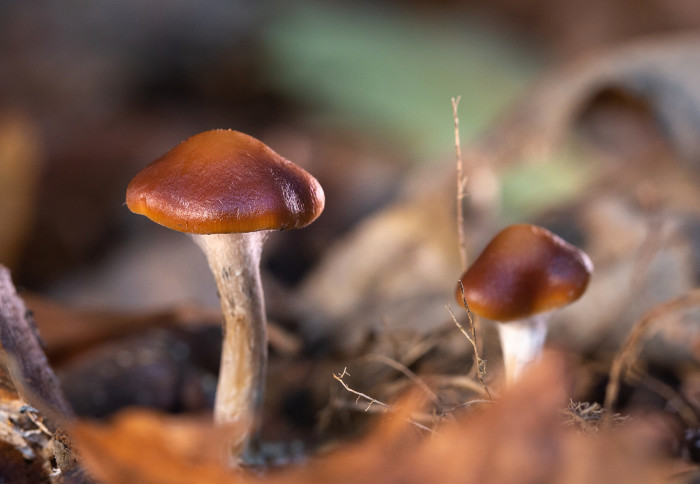In the shade of ancient hazel groves on the Isle of Seil, where moss and lichen weave a fairy-tale web, lies a hidden world that could hold the key to saving the planet’s forests. Here, in the Ballachuan Hazel Wood, one of Britain’s oldest remnants, scientists are uncovering a secret rooted deep in the soil: mycorrhizal fungi, the silent allies of trees, can revive vanishing ecosystems. A study conducted in this reserve, reported by Matthew Ponsford on August 15, 2025, reveals how these underground networks could become the “lifeblood” of forests, yet their mysteries remain largely unexplored.
Ancient Forests and Their Invisible Guardians
Spanning 49 hectares in the Hebridean archipelago, Ballachuan Hazel Wood is a relic of the temperate rainforests that covered Britain 10,000 years ago. As biologist David Satori from the Royal Botanic Gardens, Kew, notes, these hazel groves predate any pine or oak forests in the country. Their uniqueness lies not only in their age but also in their underground ecology. Mycorrhizal fungi, living in symbiosis with tree roots, exchange nutrients, boosting tree growth and resilience. Studies show that planting trees in soil with active fungal networks can enhance their development by 64%. Yet, paradoxically, three-quarters of these fungi are known only by their DNA traces, their physical forms remaining elusive.
Satori and his colleague Bethan Manley from the Society for the Protection of Underground Networks (Spun) are probing the soil around hazel roots, collecting root tips and DNA samples to create the first map of mycorrhizal communities in Britain’s temperate rainforests. Their mission extends beyond Scotland: Spun is working in Colombia and on Palmyra Atoll, mapping the “planetary bloodstream”—a global fungal network critical to forest survival.
The Threat of Extinction and Hope for Restoration
Temperate rainforests, covering less than 1% of Earth’s surface, are under siege. Research from the University of Leeds predicts that climate change could wipe out two-thirds of these ecosystems, with countries like Austria facing up to 90% loss. Britain and Ireland, however, have a unique opportunity: their rainy, treeless lands are ideal for forest restoration. But without fungi, this task is nearly impossible. In Scotland, where forests have been absent for a thousand years in some areas, soils often lack fungal microbiomes, leaving trees vulnerable to drought and disease.
Restoration projects, like the 30-hectare Bowden Pillars reserve in Devon, show how forests can be revived. Volunteers have planted over 2,500 trees, but the focus is on natural colonization of seeds and fungi. Claire Inglis from the Devon Wildlife Trust emphasizes: “Natural regeneration is the most sustainable path.” Meanwhile, the National Trust is experimenting with inoculation—adding fungal spores or soil from healthy ecosystems to degraded lands. Yet commercial biofertilizers often prove ineffective or even harmful, underscoring the importance of preserving relic forests as “reservoirs” of fungi.
Fungi as a Bridge to the Future
This research is not just a scientific breakthrough but a call to rethink our approach to nature. Fungi, long overshadowed by trees, are proving just as vital to ecosystems. Their role in forest restoration highlights how little we know about the underground world that sustains life above. Satori’s vision of “interconnected landscapes” where fungi, animals, and plants can freely interact is inspiring but demands long-term commitment and political will.
Challenges abound. The commercialization of biofertilizers shows how profit-driven shortcuts can undermine ecological efforts. Moreover, forest restoration is not just about planting trees but about preserving fragile fungal networks that can be easily destroyed by careless intervention. Britain, with its unique climate, could lead this effort, but success hinges on global cooperation and the protection of relic ecosystems like Ballachuan.
Fungi are not merely a “magic ingredient” but a reminder that nature operates as a unified whole. If we aim to save forests, we must learn to see not just the canopy but the roots—and the invisible threads that bind them to life.

